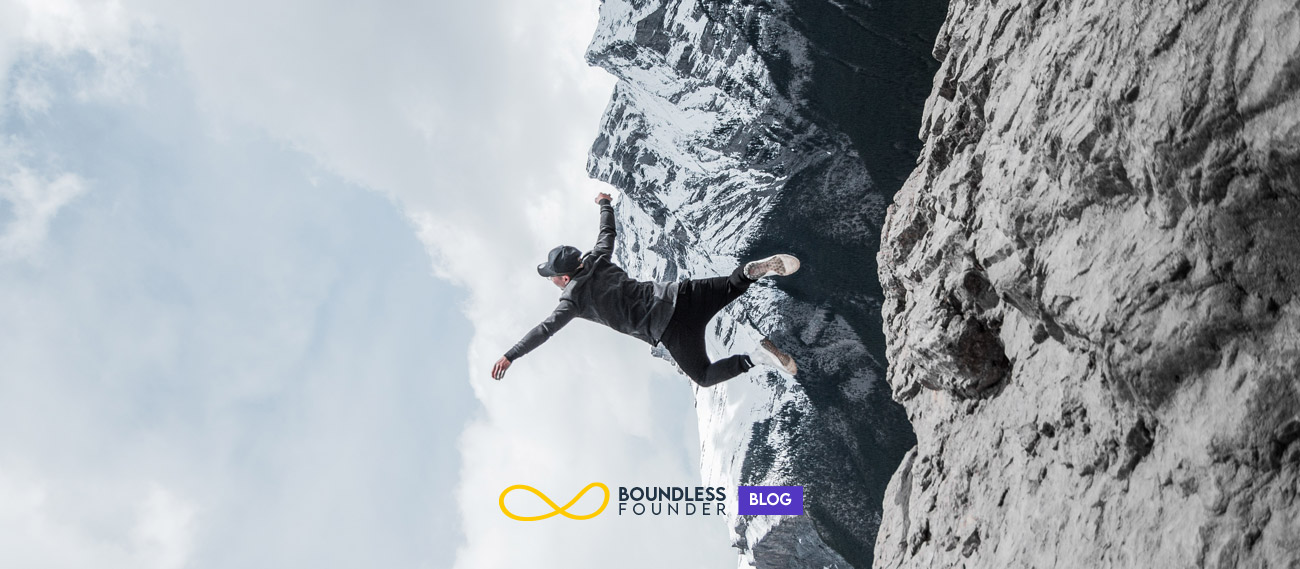The Entrepreneur’s Mind knows the journey isn’t a sprint to exhaustion—it’s about mastering the art of recovery for the long game. Here’s why planning your work around breaks—not your breaks around work—could be the mindset shift that saves both your startup and your sanity.
The $65,000 Wake-Up Call
It was around 3 AM when I found myself staring at the ceiling, my mind racing through every possible scenario to address the $65,000 cloud infrastructure bill that threatened to sink my startup. For the past month, I had been working 16-hour days, believing that sheer effort would solve the problem. Instead, I was frozen, caught in what I now recognize as the thoughts-emotions loop—a cycle of anxiety that paralyzed my decision-making abilities.
That night marked my breaking point. After weeks of diminishing returns despite increasing hours, my body and mind simply shut down. I couldn’t get out of bed the next morning. What I initially dismissed as exhaustion was actually my first brush with a panic attack.
This experience forced me to confront a painful truth: I had fallen victim to the entrepreneurial hustle culture, the belief that success is directly proportional to the number of hours worked. It also made me reevaluate the Entrepreneur’s Mind—not just as a driving force, but as something that needs rest, clarity, and care. I discovered that this mindset wasn’t just unhealthy—it was actively sabotaging my business.
The Myth That’s Killing Entrepreneurs
We entrepreneurs operate in a culture that glorifies sacrifice and celebrates those who burn the candle at both ends. “I’ll sleep when I’m dead” becomes the mantra, and tales of 100-hour workweeks are badges of honor.
But this hustle mythology ignores a fundamental truth about human performance: our brains, like our bodies, aren’t designed for constant exertion. They’re designed for rhythmic cycles of engagement and recovery.
The science is clear. Research from the University of Illinois found that brief diversions from tasks dramatically improve one’s ability to focus on that task for prolonged periods. Similarly, a Stanford University study showed that productivity per hour declines sharply when the workweek exceeds 50 hours, and after 55 hours, additional time is essentially wasted.
This isn’t just academic theory. Look at the entrepreneurs we truly admire—those who’ve built sustainable, world-changing companies—and you’ll notice a pattern. They understand that entrepreneurship is a marathon, not a sprint. They’ve learned to harness the power of recovery as a strategic advantage.
The Recovery Paradox
Here’s what took me years to understand: rest isn’t the absence of productivity—it’s a crucial component of it.
Think of your mental resilience like a muscle. When you exercise a muscle, you create micro-tears in the tissue. It’s during the recovery period—not during the workout itself—that the muscle rebuilds stronger than before. Push too hard without adequate recovery, and you don’t get stronger; you get injured.
Your entrepreneurial mindset works the same way. Periods of intense focus and problem-solving create cognitive strain. Without proper recovery, this strain accumulates, eventually leading to diminished creativity, poorer decision-making, and ultimately, burnout.
I learned this lesson the hard way. After my near-breakdown experience, I was forced to reassess my approach. I began to see that my previous 16-hour days weren’t actually filled with 16 hours of quality work. They were more like 5-6 hours of focused productivity padded with procrastination, distraction, and low-value activities—all fueled by an increasing sense of anxiety about not doing enough.
The Strategic Rest Framework
Once I recognized the problem, I developed what I now call the Strategic Rest Framework—a systematic approach to integrating recovery into the entrepreneurial journey. This isn’t about working less; it’s about working better by honoring our cognitive limits and harnessing our natural rhythms.

Here’s how to implement it in your own venture:
1. Adopt the Reverse Calendar Approach
Most entrepreneurs plan their work and then try to fit breaks around it. This invariably leads to rest being squeezed out when things get busy—precisely when you need it most.
Instead, try the reverse calendar approach:
- Plan your year by first blocking out vacation time (minimum 4 weeks, ideally distributed quarterly)
- Schedule regular weekly breaks (weekends or equivalent)
- Build daily recovery periods (30-90 minutes) into your schedule
- Fill the remaining time with work commitments
This approach ensures that recovery isn’t an afterthought but a foundation of your working rhythm.
When I implemented this system, something counterintuitive happened. Despite technically working fewer hours, my productivity increased dramatically. Decisions I had struggled with for weeks suddenly became clear after a three-day weekend away from the problem.
2. Understand Your Recovery Typology
Not all rest is created equal, and what works for one entrepreneur may not work for another. Based on my experience and conversations with hundreds of founders, I’ve identified four primary recovery types:
- Physical Rechargers: These entrepreneurs restore mental energy through physical activity—running, gym sessions, or sports
- Social Rechargers: They gain energy from meaningful interactions with others
- Solitude Seekers: These individuals need quiet time alone to process and recharge
- Creative Diverters: They recover by engaging in unrelated creative activities
Understanding your type is crucial because it helps you design recovery periods that actually work. I discovered I’m primarily a combination of Physical Recharger and Solitude Seeker. My most effective recovery activities became morning runs followed by quiet reflection time.
Take a moment to reflect: Which recovery type resonates most with you? What activities truly leave you feeling mentally refreshed rather than just distracted?
3. Master the Three-Phase Recovery Cycle
Effective rest isn’t just about duration; it’s about quality. I’ve found that the most rejuvenating breaks follow a three-phase pattern:
Phase 1: Disconnection (1-2 days)
The first part of any significant break should focus on creating distance from work concerns. This means:
- Physical separation from your workspace
- Digital disconnection (email, Slack, etc.)
- Mental disengagement through absorbing activities
This phase is often uncomfortable. Your mind will resist, generating “urgent” reasons to check in. Push through this resistance—it’s a sign the disconnection is working.
Phase 2: Presence (2-5 days)
Once you’ve created some distance, you enter a state where you can be fully present in non-work experiences:
- Engage completely in activities without divided attention
- Allow your subconscious to process work challenges
- Reconnect with your identity beyond being a founder
Phase 3: Reflection (1 day)
Before returning to work:
- Process insights that emerged during your break
- Consider your priorities with fresh perspective
- Set intentions for your return
After establishing this cycle, I found that even shorter breaks became more effective because I had trained myself to move through these phases more efficiently.
The ROI of Rest
When I share this framework with other entrepreneurs, the most common objection is predictable: “I don’t have time for this.” I understand the sentiment—I once believed it myself. But this thinking confuses urgency with importance.
Consider the actual return on investment. After implementing the Strategic Rest Framework, I experienced:
- 40% reduction in time spent resolving complex problems
- Near elimination of decision fatigue in the afternoon
- Significantly improved relationships with my team and family
- More creative solutions to business challenges
- Increased capacity to handle crises without emotional hijacking
Perhaps most telling was how I handled the next major crisis. When our second acquisition attempt faltered and our board suggested shutting down the company, I didn’t panic. Instead of weeks of paralysis, I took 24 hours to reset, then returned with clarity and negotiated a path forward. Two months later, we closed a successful acquisition deal.
Building Your Personal Rest Protocol
Ready to implement this approach in your own entrepreneurial journey? Here’s a simple process to create your personalized rest protocol:
- Audit Your Current Pattern: Track your work/rest patterns for a week. Notice when your energy and focus peak and wane.
- Identify Recovery Debt: Are you showing signs of insufficient recovery? Common indicators include trouble sleeping despite exhaustion, irritability, difficulty focusing, and decreased creativity.
- Schedule Recovery First: Block out your calendar for the next quarter, starting with strategic recovery periods.
- Design Environment Triggers: Create physical cues that support your transitions between work and recovery modes.
- Build Accountability: Share your rest commitments with someone who will hold you to them.
Remember, the goal isn’t to work less—it’s to achieve more by working in alignment with your cognitive capacity rather than against it.
The Mindset Shift: From Hustle to Harmony
Ultimately, strategic rest requires more than just calendar blocking. It demands a fundamental shift in how you view the relationship between effort and achievement.
The entrepreneurs who thrive long-term aren’t those who push hardest—they’re those who develop sustainable systems that honor both their ambition and their humanity. They understand that their most valuable asset isn’t their product, their team, or their capital—it’s their mind. And they protect and nurture that asset accordingly.
I’ll leave you with the question that transformed my approach: What if the key to your startup’s success isn’t working more hours, but ensuring that the hours you work are backed by a rested, creative, and resilient mind?
Your future self—and your startup—will thank you for considering it.
Ready to build your own Strategic Rest Framework? Download our Mental Resilience Workbook for step-by-step guidance on implementing these principles into your entrepreneurial journey.











Responses